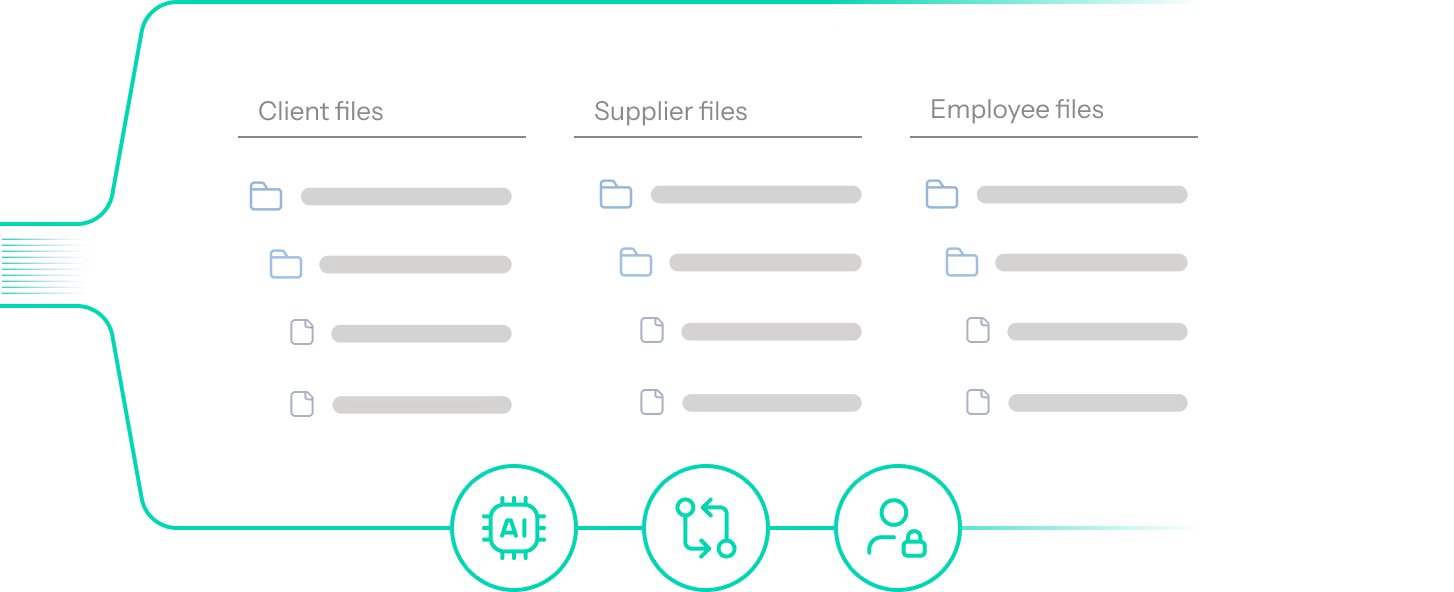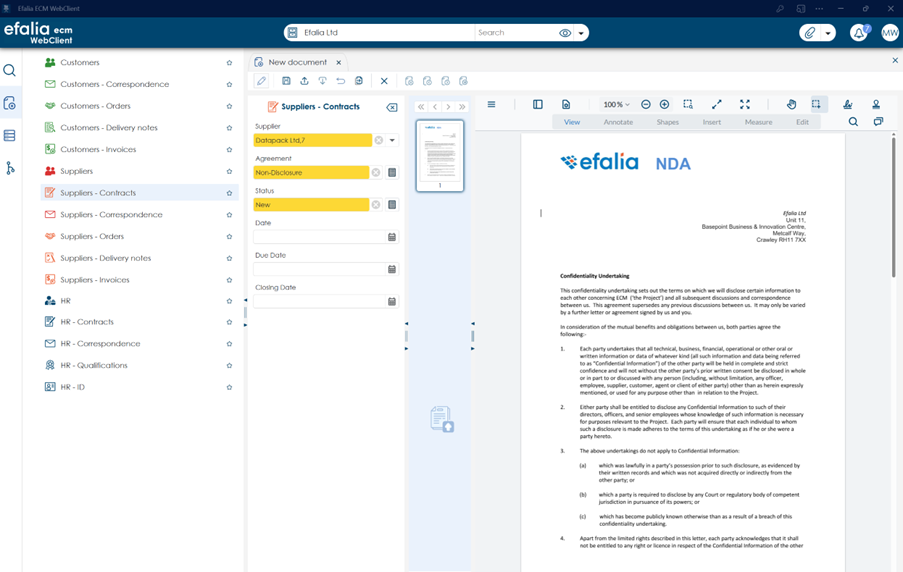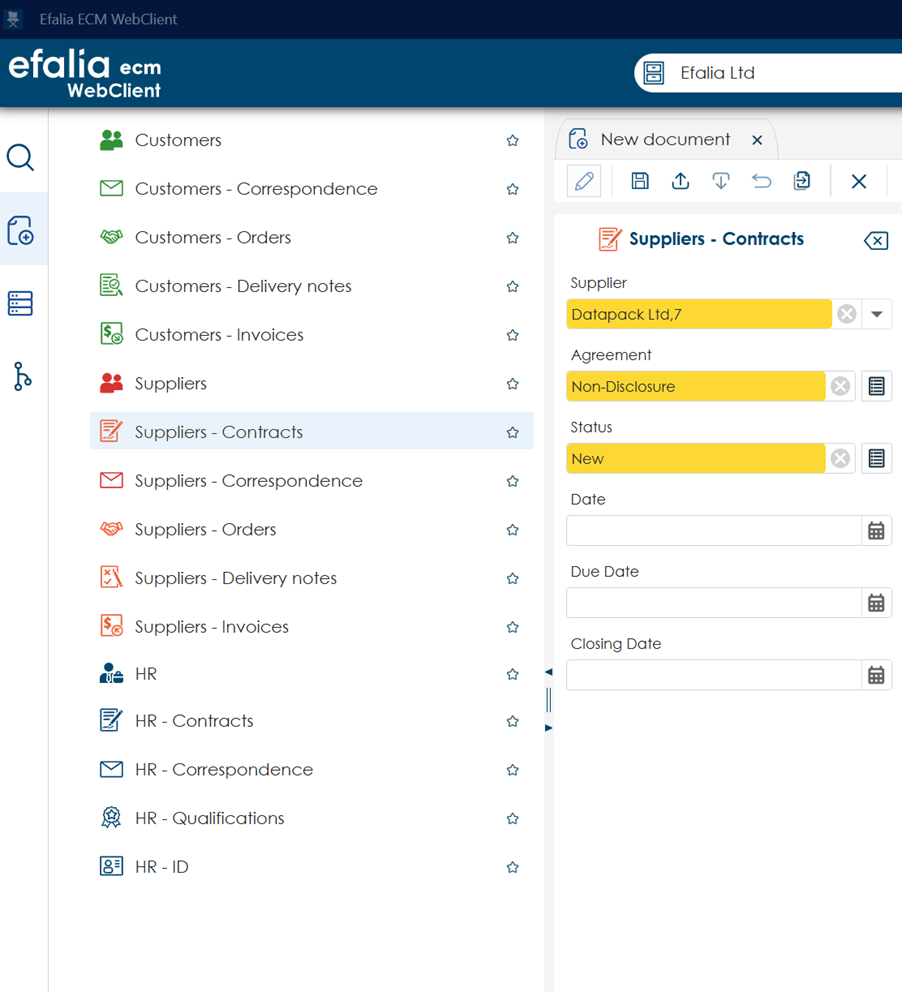Electronic content management software
The documentary backbone that transforms your organization
Give a new dimension to your document management with a powerful engine that centralizes, classifies and secures your documents.
ECM

+404%
Average ROI over 3 years
+90%
automatic compliance
-40%
paper-related costs
The best electronic management solution for sharing your documents.
simple integrated capture or smart capture available

Dynamic ranking and naming convention

Classification and linked files for a clear understanding

Comment, modify and follow all the history of your documents

Dual search system to alternate between speed and precision

Simple integrated or smart capture available
.png)
BENEFITS
Digital content management in Saas or on-premise
Efficiently dematerialize your documents, and store them in a secure platform, available as SaaS or hosted on-premise. Managing and sharing documents has never been easier, increasing the speed of accessto important content. Whilst in-software real-time collaboration offers improved productivity.
Filing documents with OCR
Efalia ECM has an intelligent archiving system, coupled with OCR: the software can recognize words and characters, vastly enhancing document retrieval. End-of-life files can then be removed from the ECM,or stored in an Electronic Archive for preservation purposes (e.g. Efalia Safe).
Documents Secured
Efalia ECM offers double security: not only does it offer extensive external protection, but it also offers effective access control for various internal collaborators. The entire system is encrypted from start to finish.
Complies with current standards
Our solution complies with GDPR and other current standards, whether in terms of storage, security or confidentiality ofdata. We can implement on premise in your own secure environment or with ECM Cloud host your data in Microsoft Azure.
Use the full potential of your documents
Give a new dimension to your document management with a powerful engine that centralizes, classifies and secures all your content.
Efalia ECM reduces paper consumption and storage costs, provides efficient classification and document searching, and allows real-time collaboration and secure and effective distribution. Available for any sector, from public to private, and unlimited applications.
Efalia ECM reduces paper consumption and storage costs, provides efficient classification and document searching, and allows real-time collaboration and secure and effective distribution. Available for any sector, from public to private, and unlimited applications.
HR files
Centralize all HR documents related to each employee.Automatically create a structured file at the time of employee onboarding, and follow it throughout the employee's career.
- Employment contract & amendments
- Credentials and administrative documents
- Documents related to training, absences, timesheets
- Annual interviews, HR decisions, specific requests

Supplier & customer files
Automatically structure the key documents of each third party directly in ECM. Increase efficiency and compliance by creating a single and centralized file for each customer or supplier, from their first interaction.
- Contracts, purchase orders and invoices
- Legal supporting documents (Certificate of Incorporation, Insurance, IBAN Confirmation document, Compliance certificates)
- Commercial correspondence and complaints
- Quality, after-sales service or regulatory compliance documents

Quality & reference files
Centralize all your quality documentation in a single, reliable and compliant space. Structure your procedures, records and normative documents to increase rigor, traceability and efficiency during audits.
- Quality standards (CE, ISO, IFS, HACCP, etc.) with versioning
- Internal procedures, operating procedures, job descriptions
- Quality records: checklists, reports, controls,
- Action plans, review reports or internal audits
- History of changes, traceability, access rights by role

efalia
Go further! use our platform as
AI knowledge base and connect it to your agents/LLM

Your AIs and Agents 3x more efficient
Electronic Content Management is the ideal tool for structuring a knowledge base optimized for AI.
- Metadata
- User rights
- Vectorization templates
- User rights
- Vectorization templates

“We needed to modernize without breaking everything. The equation was not simple: few resources, a lot of expectations, and an absolute requirement on robustness. Now, we no longer run after documents or information. Everything is there, reliable, structured, accessible. And that changes everything on a daily basis. ”

Sébastien Beck
AMOA HR Project Manager











*double word count for users
document management
1. Think carefully about the architecture of the information system
You need to precisely understand your functional needs in order to integrate the right tools in the right places... We can put all the connections in the world, which will guarantee the success of your documentary platform and the user journey!
2. Connect tools and remove duplicate interfaces

100% integrated, invisible!
Manage our services directly from your business applications.
The document engine works in the background while your users maintain their work habits.

Integrated but accessible
Combine the best of both worlds: access your documents from our intuitive interface while allowing seamless interactions with your business applications.

Autonomous access
Use our interface as the main entry point to your document management, while maintaining the ability to connect to your other applications.








3. Call on passionate experts who will be able to guide you

Work with a company whose mission is
Reinventing collaboration
around information
trusted
Whether through our teams or through our certified, hand-picked integrators, we will do everything to ensure that your project can transform the way you work.
Find a certified integrator >





